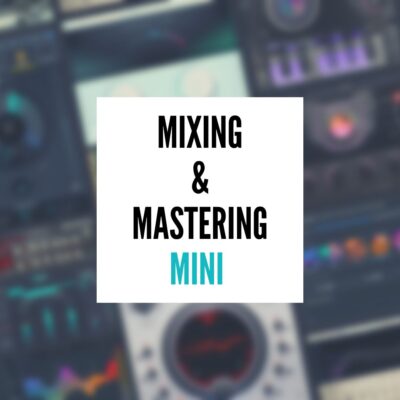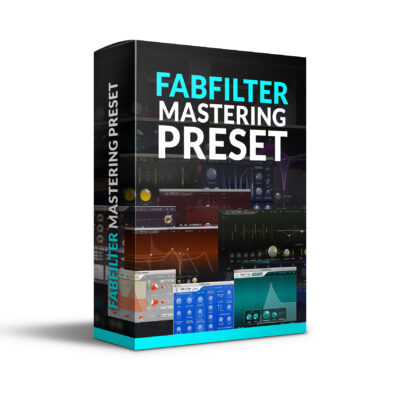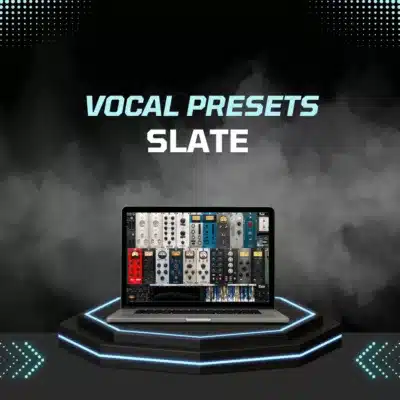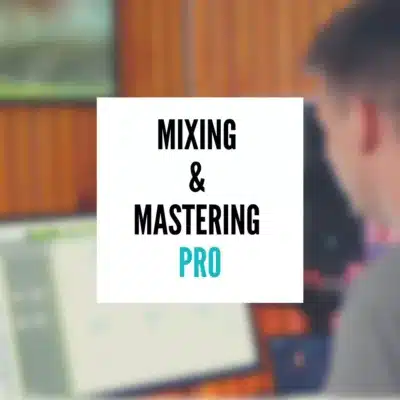After two decades of mixing vocals for major artists and independent musicians alike, I’ve learned something surprising: more plugins don’t equal better results. In fact, some of my best vocal mixes use just three simple tools.
If you’ve ever found yourself stacking seven plugins on a vocal track only to bypass them all and realize it sounded better raw, you’re not alone. The truth is, most vocal mixing problems can be solved with a straightforward chain that focuses on the fundamentals rather than chasing the latest trendy plugin.
Why Simple Beats Complex in Vocal Mixing
Before we dive into the exact chain, let’s address why simplicity wins. Every plugin you add introduces potential phase issues, processing artifacts, and decision fatigue. Dynamic EQs, multiple compressors, and resonance suppressors all have their place, but they can easily do more harm than good when overused.
The four-step approach I’m sharing today handles the core issues that plague 90% of vocal recordings:
- Proximity effect and low-end buildup
- Inconsistent dynamics
- Lack of presence and clarity
- Harsh sibilance
The Signal Flow Matters
Here’s something crucial that many beginners get wrong: always EQ before compression. This isn’t just personal preference—it’s about feeding your compressor the right information.
Think about it this way: if your vocal recording has room rumble, air conditioner noise, or harsh resonances, and those hit your compressor first, you’re compressing problems instead of solutions. The compressor will react to that low-end rumble or those piercing frequencies, which has nothing to do with the actual vocal performance.
By cleaning up the signal with EQ first, you ensure the compressor only works on the frequencies that matter.
Step 1: Clean Low-Shelf Filter (Not a Harsh Cut)
Start with a basic parametric EQ—I use FabFilter Pro-Q, but any quality EQ works fine.
Everyone knows to add a high-pass filter to remove rumble, but here’s the move that makes the difference: add a low shelf instead of notching out specific frequencies.
Rather than carving out 200-500 Hz where proximity effect lives (that boxy, muddy sound from singing close to the mic), use a gentle low shelf starting around 700 Hz and roll off a few dB. Sometimes you’ll need 2-3 dB, other times you might push it to 6 dB or more depending on the recording.
The beauty of this approach? It’s far less intrusive than surgical cuts, and you won’t need to boost as much high-end later to compensate. The vocal immediately sounds cleaner and more professional.
Critical tip: Never EQ vocals in solo. Your vocal needs to sit in the context of the full mix. What sounds good isolated often sounds terrible with the track playing.
Step 2: Aggressive 1176-Style Compression
Now that you’ve cleaned up the signal, it’s time to bring consistency and energy with compression.
Use any 1176-style compressor (UAD, Waves CLA-76, or whatever you have access to). The 1176 is perfect for vocals because it’s fast, musical, and adds a certain character that just works for modern production.
For rock, pop, and most contemporary styles, don’t be shy here—aim for 5-10 dB of gain reduction. Yes, that’s aggressive, but it’s what pulls the vocal forward and makes it sit confidently in the mix.
Set your attack relatively fast (the 1176 is naturally fast anyway) and adjust the release to taste. I usually bring the release up slightly to help it groove with the track better.
Use the auto makeup gain if your compressor has it, or manually compensate for the level loss. When you A/B this step, you’ll hear the vocal suddenly has punch, consistency, and presence it was missing before.
Step 3: Presence Boost for Clarity
With the low-end cleaned and dynamics controlled, it’s time to add some sparkle and air.
Use either a high shelf or a bell curve starting around 4-8 kHz. I often start with a bell to focus on presence around 4-5 kHz, then switch to a shelf if I want to extend the brightness up into the air frequencies (10 kHz and above).
This is where you bring out the natural character of the vocalist’s tone. Boost conservatively at first—2-4 dB is usually plenty. This step makes the vocal cut through dense arrangements and adds that professional polish.
The combination of cleaning up the lows and enhancing the highs creates separation and clarity without sounding overly processed.
Step 4: De-Essing the Sibilance
Here’s the catch with adding high-end: you’ll likely emphasize sibilance (those harsh “S” and “T” sounds). That’s normal and easy to fix.
Add a de-esser at the end of your chain—something straightforward like FabFilter Pro-DS works great. Set it to catch those harsh frequencies (usually 6-9 kHz) and aim for no more than 4 dB of gain reduction. Any more than that and the vocal starts sounding lispy and lifeless.
Pro tip: If you’re working with an extremely sibilant vocalist, place one de-esser at the beginning of your chain (before the compressor) and another at the end. The first catches the worst offenders before compression exaggerates them, and the second catches anything that got emphasized by your presence boost.
Before and After: The Proof Is in the Listening
When you A/B bypass this entire chain, the difference is dramatic. The vocal goes from sitting behind the mix with inconsistent levels and muddy tone to sitting confidently upfront with clarity, punch, and polish.
Three plugins. Four adjustments. Massive improvement.
Adjusting for Different Styles
While this chain works for most contemporary production, you can dial it back for more intimate, organic styles.
Working on a singer-songwriter track with just guitar and vocal? Reduce that compression to 2-3 dB of gain reduction instead. This keeps more dynamic range and maintains the intimate, emotional quality of the performance while still controlling peaks.
The beauty of this system is its flexibility—the same chain works, you just adjust the intensity based on the genre and vibe you’re going for.
When to Know You Need Professional Help
This four-step chain solves most mixing challenges, but there’s a reason professional mixing engineers stay in business. Some projects need that experienced ear—someone who’s mixed thousands of tracks and knows exactly how to make your specific song compete with commercial releases.
If you’ve tried these techniques and still feel your tracks aren’t quite reaching that professional standard, that’s where specialized mixing and mastering services can make all the difference. Sometimes the investment in professional mixing is what transforms a good song into one that stands out among the hundreds of thousands of releases flooding streaming platforms every single day.
Final Thoughts
The next time you’re mixing vocals, resist the urge to load up a dozen plugins. Start with this simple chain: clean low shelf, aggressive compression, presence boost, and controlled de-essing.
Master these four fundamentals, and you’ll be shocked how much better your vocals sound. Then, and only then, consider if you need anything more complex.
Often, you won’t.






